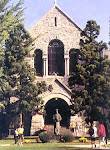My name is Nicole Gervasio, and I’m a senior majoring in English and Growth & Structure of Cities at Bryn Mawr College. I’ve been helping Professor Goldsmith put together a Teaching and Learning Initiative (TLI) at Ursinus this semester, which is my second as a student consultant.
Before I get into what being a TLI student consultant entails, I’d like to say a bit about what our TLI at Bryn Mawr looks like. Now in its third year, our program has hosted thirty-nine student consultants with an average of seventeen faculty-student partnerships a semester. The TLI seeks to help professors improve their courses by pairing them with student consultants. At Bryn Mawr, faculty also often enlist in a weekly pedagogy seminar that discusses broader issues related to higher education and teaching.
Student consultants attend one session of their faculty partner’s class each week, handwrite or type up observations and reflections from monitoring that class, share those notes with their partner, and give their partner feedback in one-on-one consultations once a week. Although the logistics of these tasks may shift based on the needs and preferences of each faculty member, they are four of the five essential duties of the job. The last would be attending a weekly meeting with fellow student consultants and the TLI coordinator. The meetings provides opportunities for consultants to get to know one another and mull over issues that may be going on in their partnerships together.
Many student consultants share some key traits: a genuine interest in education, a love of learning, insightfulness, a proactive, constructive attitude, compassion, and sensitivity, among many others. If you’re applying to be a student consultant, you probably exhibit many or all of these attributes. Central to the application process are two letters of recommendation, one from a professor and another from a fellow student. It should also be noted that students are not always placed with a discipline with which they are familiar—in fact, coordinators often place English students with physics professors, for example, to give both students and professors entirely new perspectives on learning.
Admittedly, the job isn’t ideal for every college student. It requires intense self-reflection, stamina, and dedication, which can seem daunting on top of your regular coursework. However, most students I know in the TLI (myself included) find that the program offers an inimitable opportunity to think deeply about education, develop ourselves as better learners, and forge some very empowering ties with faculty members in the process.
That said, the TLI also may not be ideal for every faculty member. Having an outside student come into a course and observe a professor’s teaching style, behavior, course structure, and students can be a very challenging experience. There are many times when both students and faculty members may feel vulnerable in the partnership, but that level of discomfort is completely normal—it constantly encourages further dialogue and a mutual willingness to make positive changes happen. Most partnerships also usually overcome this hesitation and evolve into strong, mutually beneficial collaborations.
I would be happy to answer any questions you might have about the TLI. Please feel free to contact me via email at ngervasio@brynmawr.edu.
